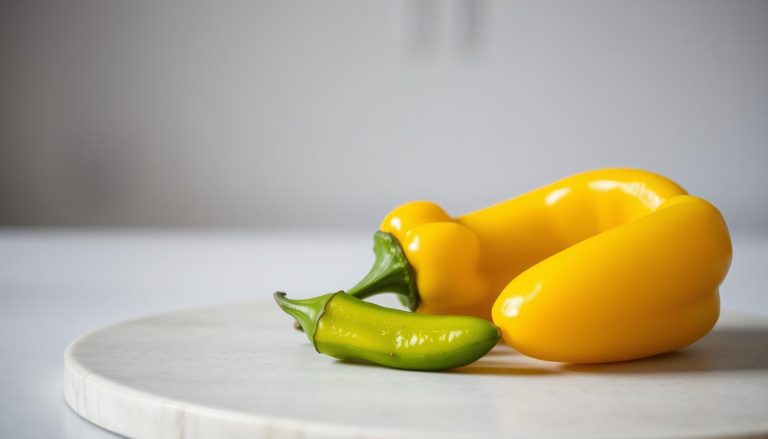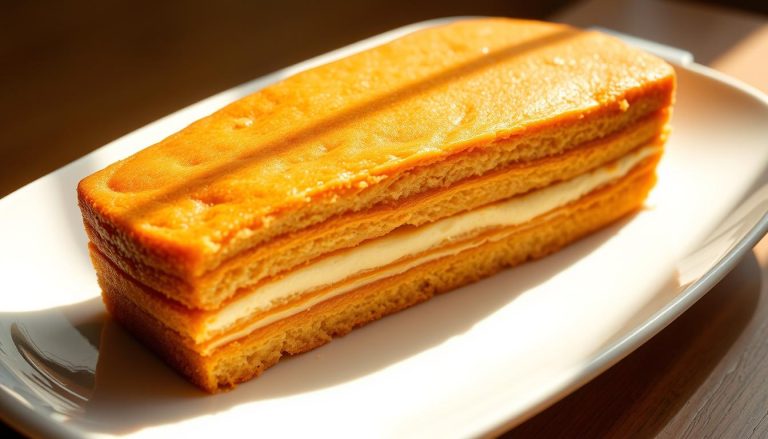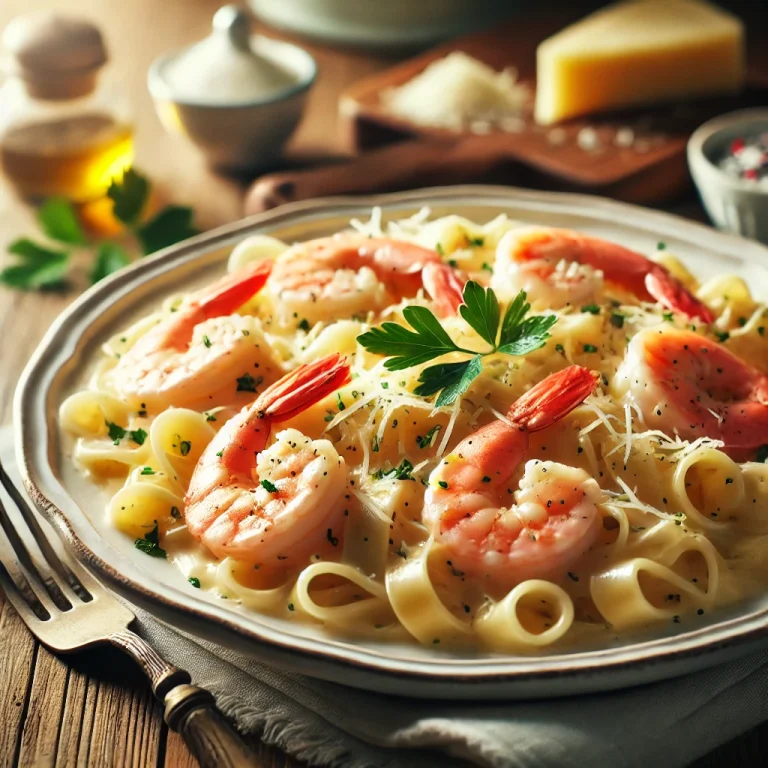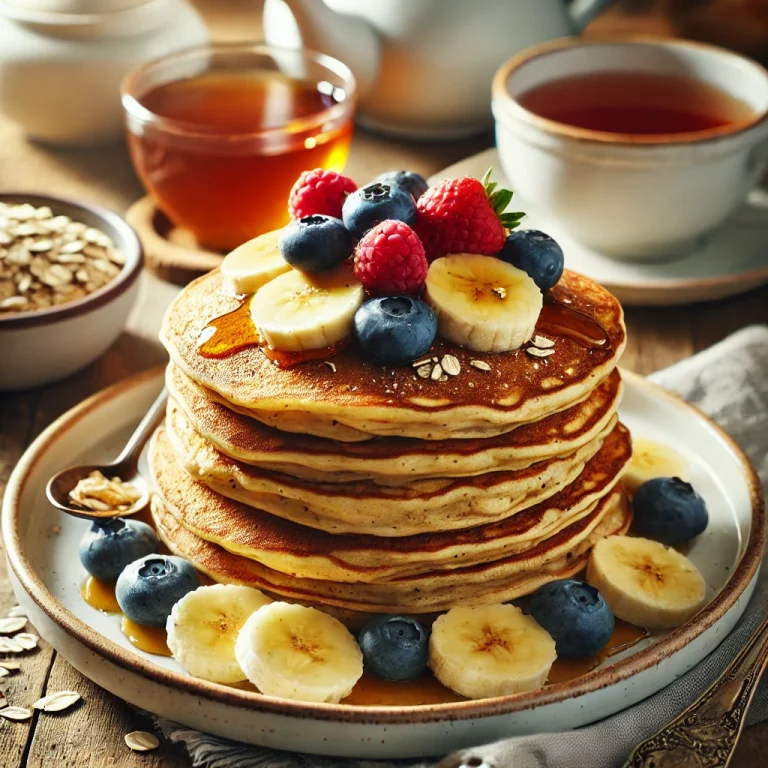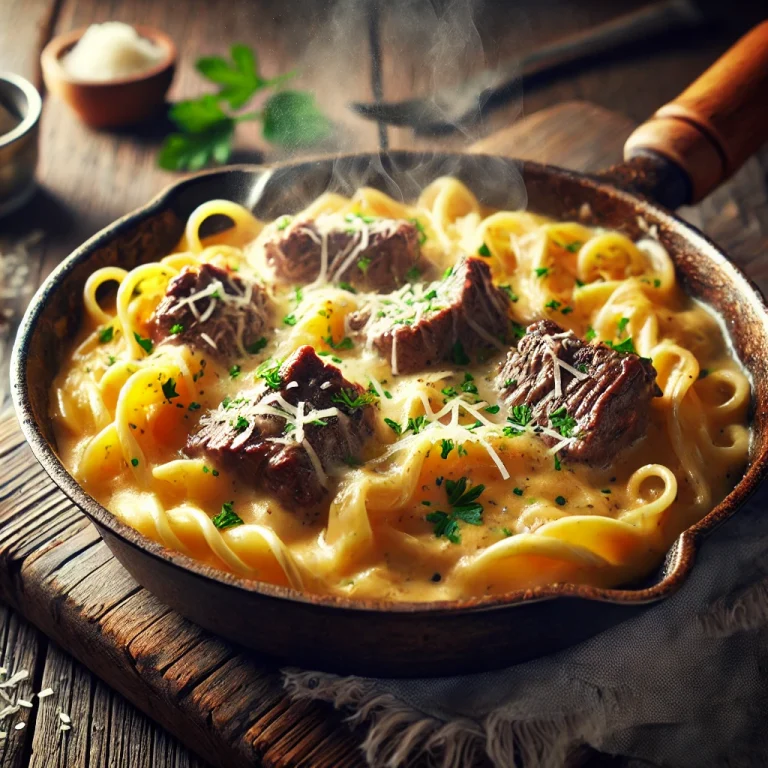What Are Banana Peppers? Flavor, Uses, and Heat Level Explained
What are banana peppers? They’re those bright yellow-green peppers you often see in salads or sandwiches. Mild and tangy, these flavorful additions turn ordinary meals into something special. As a food lover, I’ve discovered that banana peppers offer more than just a quirky name—they’re a true hidden gem in the kitchen.
Banana peppers are mild and sweet, adding a unique tang to your cooking. Their banana-like shape is easy to spot. They’re great for both home cooks and chefs, adding exciting flavors to many dishes.
These peppers are a hit in American food, from pizzas to sandwiches and salads. They add a touch of spice without being too hot. This makes them a favorite for those who like a little kick in their food.
Table of Contents
Understanding Banana Peppers: An Overview
Banana peppers are fascinating ingredients that have caught the eye of food lovers everywhere. They are a versatile pepper with a rich history and unique traits. These mild, tangy peppers add flavor and beauty to many dishes.
The story of banana peppers is one of innovation and cultural exchange. These peppers have traveled far from their origins, becoming a favorite in kitchens worldwide.
Origin and History
Banana peppers started in South America, in Brazil and Peru. The indigenous people first grew them, loving their taste and versatility. Spanish and Portuguese explorers brought them to the world in the 15th and 16th centuries.
- Native to South American tropical regions
- Introduced to global markets by European explorers
- Cultivated for both culinary and agricultural purposes
Physical Characteristics
Banana peppers are known for their banana-like shape. They are 4-6 inches long. Their color changes from yellow-green to bright red as they ripen.
Common Varieties
Banana peppers come in many varieties, each with its own taste and heat level. Some popular ones are:
- Sweet Banana Peppers: Mild and slightly sweet
- Hot Banana Peppers: Spicier version with more kick
- Hungarian Wax Peppers: Closely related subspecies
Understanding banana peppers is more than just their looks. They represent a journey across continents, adding flavor and versatility to many recipes.
What Are Banana Peppers and Their Key Features
Banana peppers are a fascinating and versatile chili pepper variety. They are known for their elongated shape and bright yellow color when ripe. This makes them stand out in the culinary world.
Banana peppers are mild and belong to the Capsicum annuum species. They are usually 2 to 3 inches long and have a smooth, waxy exterior. There are two main types: sweet and hot. Each offers a different flavor for your cooking.
- Sweet banana peppers: Mild and tangy
- Hot banana peppers: Slightly spicier with more kick
- Color variations: Yellow, green, and red
The banana pepper plant is easy to grow and thrives in warm climates. It loves plenty of sunlight. Gardeners enjoy growing them for their fruit production and compact size. They grow about 1-2 feet tall and can be grown in gardens or containers.
Banana peppers are versatile. You can pickle them, add them to salads, or use them as a sandwich topping. They add a unique flavor and crunch to many dishes.
- Mild heat level: Perfect for those who prefer less spicy foods
- Crisp texture: Adds great crunch to various recipes
- Nutritional value: Low in calories, high in vitamin C
Understanding banana peppers helps you see their culinary potential and unique features. Their shape and adaptable flavor make them a delightful addition to any kitchen.
The Distinct Flavor Profile of Banana Peppers
Banana peppers bring a unique taste to the table. They mix a hint of sweetness with a gentle heat. This makes them great for many dishes. Knowing the banana pepper scoville scale helps you enjoy their flavor more.
The taste of banana peppers changes based on their type and how they’re prepared. There are mainly two types that affect their taste:
Sweet vs Hot Varieties
- Sweet Banana Peppers: Mild and tangy with almost no heat
- Hot Banana Peppers: Slightly spicier with a more pronounced banana pepper scoville rating
Taste Characteristics
When you eat a banana pepper, you get a bright, crisp taste. It can be mildly sweet or a bit spicy. The pepper’s thin walls give it a crunchy texture and clean taste. You might notice:
- Tangy undertones
- Mild heat sensation
- Subtle sweetness
Comparing Fresh and Pickled Flavors
Fresh and pickled banana peppers taste different. Fresh ones are crisper and more vibrant. Pickled peppers have a tangy vinegar taste that makes their natural flavors stand out. The pickling process can make them taste more complex and strong.
Banana Peppers Heat Level and Scoville Rating

Learning about the banana pepper scoville rating shows how mild they are. They usually have a heat level between 0-500 Scoville Heat Units (SHU). This makes them much milder than other peppers.
Banana peppers are among the mildest in the chili world. Their low heat is great for those who want a little spice but not too much.
- Mild heat range: 0-500 SHU
- Comparable to sweet bell peppers
- Safe for most taste preferences
Several things can affect a banana pepper’s heat level. These include:
- Growing conditions
- Soil nutrition
- Pepper maturity at harvest
- Specific pepper variety
| Pepper Type | Scoville Heat Units |
|---|---|
| Banana Pepper | 0-500 SHU |
| Jalapeño Pepper | 2,500-8,000 SHU |
| Bell Pepper | 0 SHU |
| Poblano Pepper | 1,000-2,000 SHU |
When picking banana peppers, younger ones are milder. More mature peppers might be a bit hotter. Choose based on your taste and recipe needs.
Banana Peppers vs Pepperoncini: Key Differences
Many home cooks get confused by banana peppers and pepperoncini. They look similar but have different tastes, looks, and uses in cooking.
Knowing the differences between banana peppers and pepperoncini can make your cooking better. It helps you pick the right pepper for your recipe.
Shape and Appearance
The looks of banana peppers and pepperoncini are a bit different:
- Banana peppers are longer and more curved, like a banana
- Pepperoncini are shorter and have more wrinkles
- Banana peppers have smoother skin
Heat Level Comparison
Looking at the heat of banana peppers and pepperoncini shows some big differences:
| Pepper Type | Scoville Heat Units | Flavor Profile |
|---|---|---|
| Banana Peppers | 0-500 SHU | Mild, slightly sweet |
| Pepperoncini | 100-500 SHU | Tangy, slightly spicier |
Culinary Applications
Pepperoncini are great for many dishes:
- Banana peppers are perfect for sandwiches and salads
- Pepperoncini are loved in Greek and Italian cooking
- Both are great for pickling and adding flavor
Choosing between banana peppers and pepperoncini depends on the flavor and heat you want in your dish.
Growing and Harvesting Banana Peppers
Growing banana peppers is rewarding for home gardeners. They love warm, sunny spots and need special care to grow well.
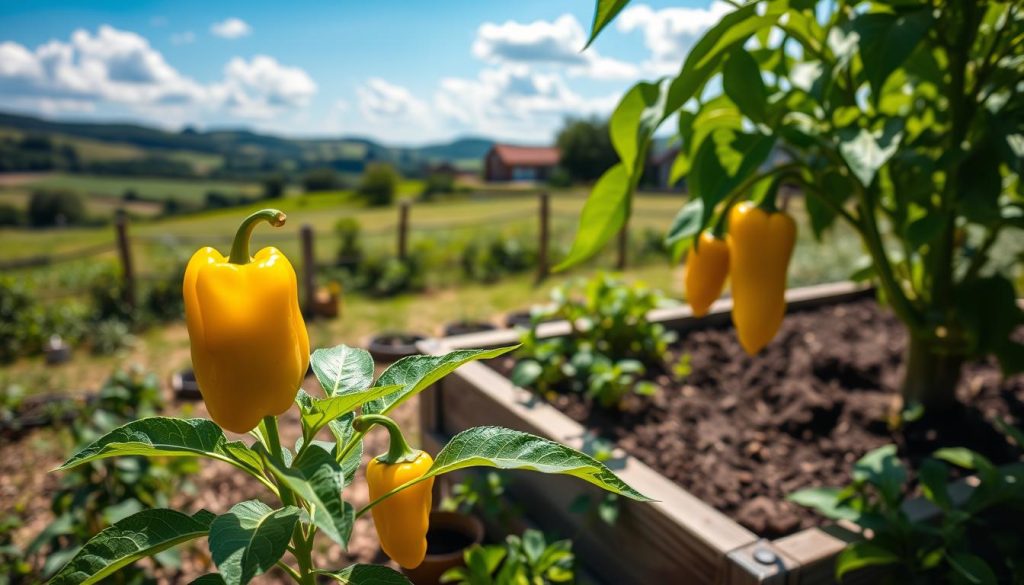
Choose a sunny spot with good drainage for your banana pepper plants. They do best in temperatures between 60-85°F. They need 6-8 hours of direct sunlight each day.
- Soil pH should be between 6.0 and 6.8
- Plant after the last frost date in your region
- Space plants 18-24 inches apart
- Use organic compost for nutrient-rich soil
Watering is key for banana pepper plants. Keep the soil consistently moist but not waterlogged. Water deeply once or twice a week, based on your local weather and rainfall.
| Growing Stage | Care Requirements | Time Frame |
|---|---|---|
| Seedling | Warm environment, gentle watering | 0-4 weeks |
| Vegetative | Regular fertilization, full sun | 4-8 weeks |
| Flowering | Consistent moisture, support if needed | 8-12 weeks |
| Harvesting | Regular picking, monitor fruit color | 12-16 weeks |
To harvest banana peppers, wait until they turn yellow or light green. Use clean, sharp scissors to cut them from the plant. This helps the plant keep producing more peppers.
Culinary Uses and Popular Recipes
Banana peppers add a unique flavor and a touch of heat to your dishes. They are versatile and can be used in many ways. Whether you’re a home cook or a professional chef, these peppers can elevate your meals.
Find out how to use banana peppers in your cooking. They offer a world of flavors and possibilities.
Fresh Applications
Fresh banana peppers add a burst of flavor and crunch to your meals. Here are some easy ways to use them:
- Slice into salads for a tangy kick
- Add to sandwiches and wraps
- Use as a colorful pizza topping
- Chop into fresh salsa
Cooking Methods
Try different cooking methods with banana peppers to discover new flavors:
- Grilling: Brush with olive oil for a smoky flavor
- Roasting: Bring out their natural sweetness
- Stuffing with cheese or meat fillings
- Sautéing as a side dish
Preservation Techniques
Keep your banana peppers fresh for longer with these methods:
- Pickling in vinegar brine
- Freezing for future use
- Dehydrating for seasoning
- Canning for long-term storage
Exploring these uses will help you make the most of banana peppers in your cooking.
Health Benefits and Nutritional Value
Banana peppers are more than just a tasty ingredient. They are a nutritional powerhouse. With minimal calories, they are a great addition to your diet.
Banana peppers are full of essential nutrients that support your overall health. Here are some key nutritional highlights:
- Low in calories (approximately 30 calories per cup)
- High in vitamin C, boosting immune function
- Contains vitamin B6 for metabolism support
- Provides antioxidants that combat free radicals
The health benefits of banana peppers go beyond basic nutrition. Capsaicin, the compound that gives them a mild heat, has metabolic advantages. Eating them regularly may help:
- Support weight management
- Reduce inflammation
- Improve digestive health
- Enhance cardiovascular function
Your body can benefit a lot from adding these versatile peppers to your meals. Whether you eat them fresh, pickled, or roasted, banana peppers are a tasty way to increase your nutritional intake.
Storing and Preserving Banana Peppers
It’s important to know how to store and preserve banana peppers. This keeps them crisp and flavorful. Banana peppers are versatile and can be stored or preserved for year-round enjoyment.
To store them short-term, keep fresh banana peppers in the fridge’s crisper drawer. Use a perforated plastic bag to keep the right humidity. This way, they’ll stay fresh for about one to two weeks.
- Refrigeration method: Store at 45-50°F
- Use perforated plastic bags
- Check for moisture regularly
Freezing is a great way to preserve banana peppers for the long term. Here’s how to freeze them:
- Wash and dry peppers thoroughly
- Remove stems and seeds
- Slice or chop as desired
- Place in freezer-safe bags
- Remove excess air before sealing
Pickling is another tasty way to preserve banana peppers. Vinegar-based pickling makes them tangier and keeps them fresh longer. Homemade pickled banana peppers can last months when stored right.
Drying banana peppers is a traditional method that makes their flavor stronger. You can air dry, use a dehydrator, or hang them until they’re dry and crisp.
Buying Guide: Selecting the Best Banana Peppers
Choosing the right banana peppers can make your cooking better. Whether you want fresh or jarred, knowing what to look for is key. This way, you get the best quality what are banana peppers for your recipes.
When searching for the perfect banana peppers, it’s important to understand their characteristics. This knowledge helps you make a smart choice.
Fresh Banana Pepper Selection Tips
Fresh banana peppers need careful checking. Here’s what to look for:
- Bright, vibrant color without blemishes
- Firm texture with smooth skin
- Consistent yellow or greenish-yellow appearance
- No soft spots or wrinkled skin
Jarred Banana Pepper Options
When buying jarred what are banana peppers, look for these details:
- Check ingredient list for minimal preservatives
- Verify the seal is intact
- Look for brands with natural pickling methods
- Compare vinegar-based and oil-packed varieties
Pro tip: Local farmers markets often provide the freshest banana peppers with the most robust flavor.
Choosing high-quality banana peppers ensures your dishes will have that perfect tangy, slightly sweet kick. This makes them versatile in cooking.
Conclusion
Banana peppers offer a unique taste experience. They are mild and tangy, adding a special flavor to your dishes. Whether you choose fresh or pickled, they add a delightful twist to many recipes.
Knowing the banana pepper’s Scoville rating helps you understand their mild heat. Unlike hot peppers, banana peppers add a gentle warmth. This makes them perfect for enhancing your dishes without overpowering them.
Pepperoncini and banana peppers have their own unique tastes and uses. Both are great for adding flavor to your cooking. They are perfect for salads, sandwiches, pizzas, and pickled appetizers.
Adding banana peppers to your cooking can be exciting. Try different ways of preparing them and see how they can change your dishes. They offer a unique taste and a gentle heat that’s easy to handle.


